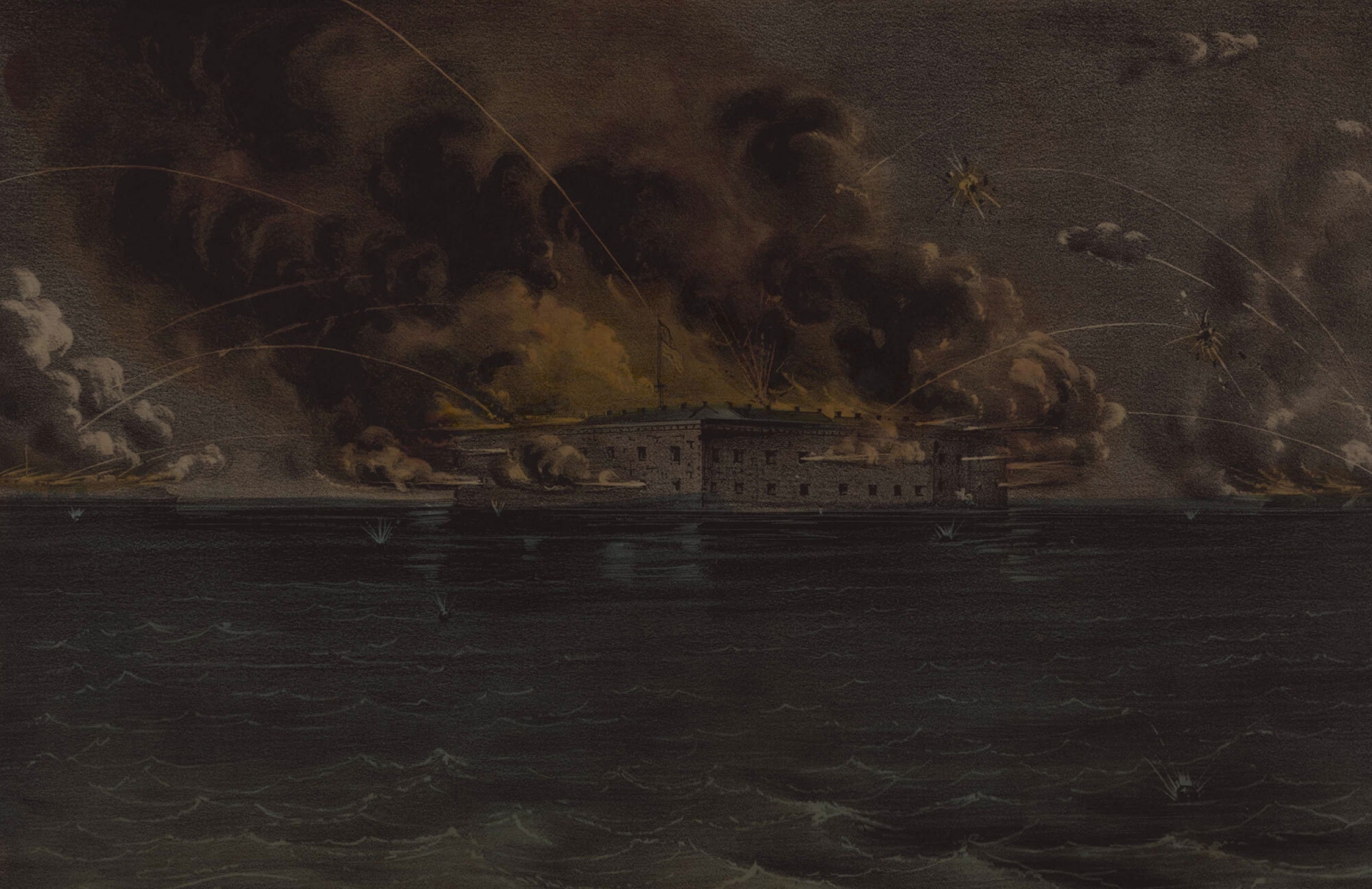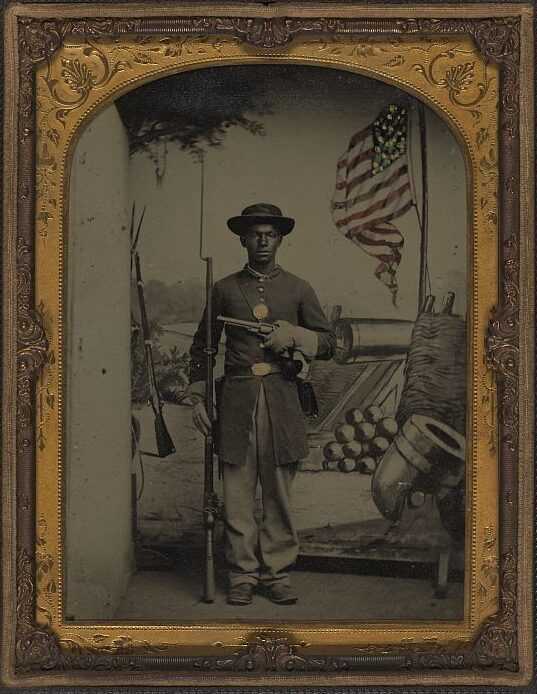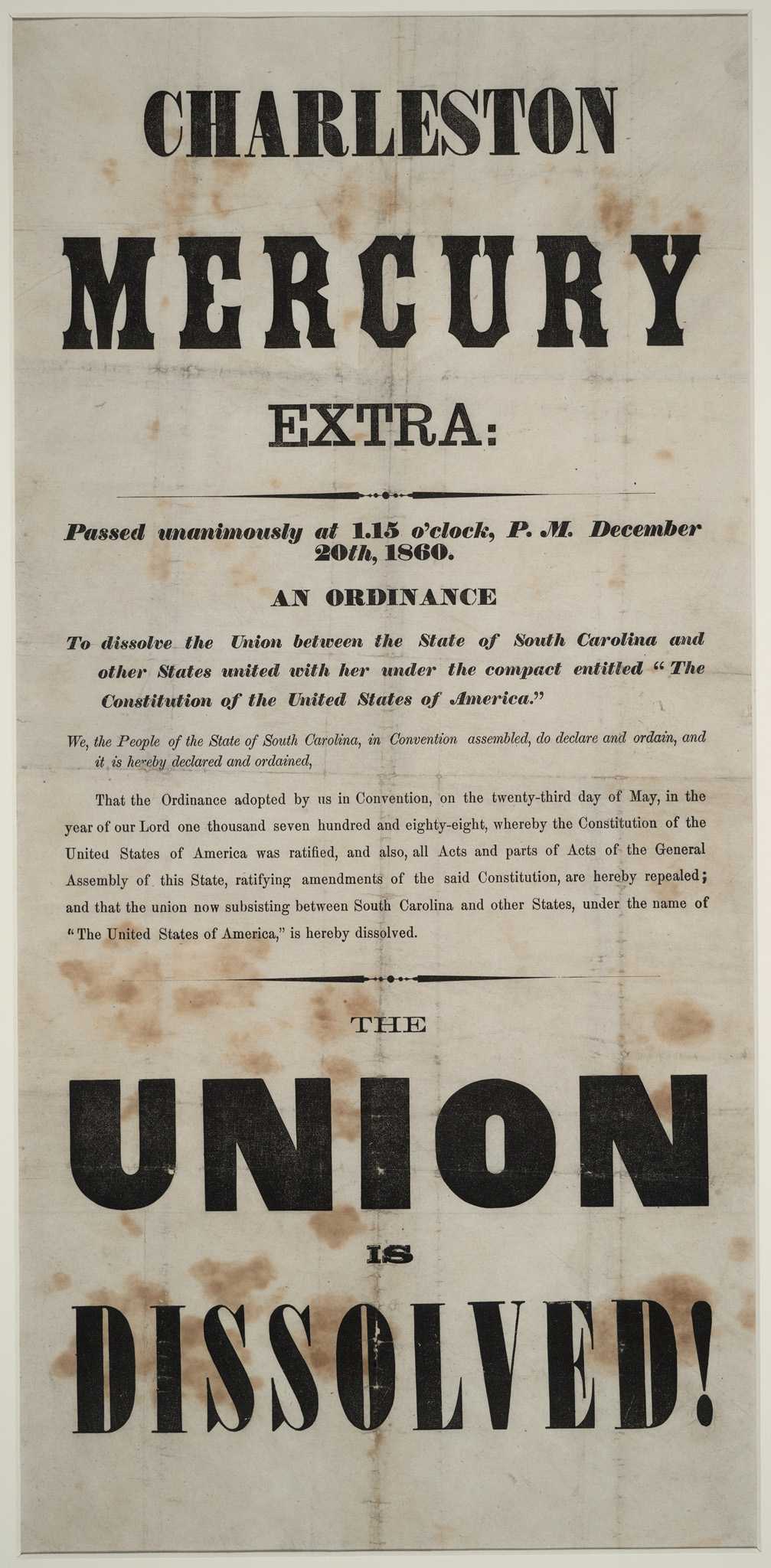Chapter 3
A Divided Nation Fights for Freedom
The election of 1860 was a turning point for the nation. The outcome would determine how the country would move forward regarding slavery. One month after the election of President Lincoln, states began to secede from the Union citing several reasons. Their demands included states' rights to maintain slavery, but also focused on property rights as they cited lack of enforcement of the 1850 Fugitive Slave Act. By April 1861, the Confederacy fired upon Fort Sumter and war was declared upon the United States. President Lincoln did not begin his term with a goal to end slavery. His military goal was to keep the Union together.
African Americans were determined to win their fight for freedom by any means necessary. They self-liberated as they escaped from plantations across the south. On January 1, 1863, the Emancipation Proclamation went into effect declaring that all persons enslaved in the rebelling states were free. It took the bloodiest war in the nation’s history to enforce the proclamation.
Like President Washington during the Revolutionary War, President Lincoln was not initially interested in African Americans serving in the military. However, based on the strategic need for increased military support and influenced by Fredrick Douglass, the president included the recruitment of Black soldiers as a provision of the Emancipation Proclamation. A war to keep the Union together became a fight for freedom and ultimately changed the nation.
The Splintering Nation
Leading into the 1860 election, the country had spent the ten years prior debating the issue of slavery. While African Americans fought for their lives, found ways to survive, experienced inhumane treatment and pushed for freedom for all. The tension continued to build as state legislatures and the federal government passed laws that fortified slavery and pushed for its abolition. The nation had to decide whether it would fight to no longer be bound by slavery.
Enforcing Inhumane Laws
Broadside Warning of Slave Catchers and Kidnapper, Boston, 1851
In 1850 the United States Congress was controlled by the enslaving class. The Constitution’s Three-Fifths Clause ensured this power by allowing enslaved Black people to be counted as part of the population that dictated taxation and representation. The forced migration of at least one million enslaved African Americans from the Upper South to the Deep South helped secure more congressional seats for southern enslaving states.
Such power helped create and pass legislation that seemingly locked in slavery. The Fugitive Slave Act of 1850 evolved from the Fugitive Slave Act of 1783 and the Fugitive Slave Cause in the Constitution. Each iteration provided stronger language enforcing the legal requirement to return human property. Northern states passed their own laws to try not to enforce the act. Southern lawmakers decried northern refusal to enforce the law.
States’ Rights to Maintain Slavery
Dred Scott
The passage of the Kansas Nebraska Act in 1854 increased the tension over the spread, legalization and enforcement of slavery in the nation. The legislation repealed the Missouri Compromise and enabled each new state that entered the Union to vote on whether to exist as a free or slave state. Both pro and anti-slavery activists fought for their cause creating a battle ground known as Bleeding Kansas.
Just three years later, in 1857, the Supreme Court determined that Black people in the United States, whether enslaved or free, were not considered citizens. As Chief Justice Roger Taney stated in his majority opinion “[Black people] had no rights which the white man was bound to respect.” Justice Tanney was one of seven Supreme Court Justices appointed to the bench by an enslaving president.
The Politician from Illinois
Abraham Lincoln, President of the United States of America, 1861–1865
Abraham Lincoln was an attorney and a stateman from Illinois. He first ran for state office in the 1830s. In October 1854 he delivered a speech denouncing the Kansas-Nebraska Act. In November of the same year, Lincoln won his campaign to serve in the Illinois House of Representatives.
Lincoln expressed his opinions regarding slavery frequently including in one of his most recognized speeches referred to today as the “A House Divided” speech. Lincoln delivered the speech in 1858, during one of seven debates between him and his political opponent Stephen Douglass. Reflecting on the state of the Union and the issue of slavery Lincoln stated “carefully contemplate that now almost complete legal combination -- compounded of the Nebraska doctrine, and the Dred Scott decision . . . what work the machinery is adapted to do, and how well adapted; . . . its construction, . . . the evidence of design and concert of action, among its chief architects, from the beginning.”

A house divided against itself cannot stand. I believe this government cannot endure, permanently half slave and half free. I do not expect the Union to be dissolved - I do not expect the house to fall - but I do expect it will cease to be divided. It will become all one thing, or all the other.
Abraham Lincoln, 1858
Abraham Lincoln: President of the United States
Abraham Lincoln ran for the highest office on the nation at a time when slavery splintered the nation along regional lines. During the 1860 election, instead of the usual two political parties, four parties ran candidates for president—two from the South and two from the North. Each candidate expressed different views on slavery.
Republican Abraham Lincoln won the election with less than 40 percent of the popular vote and without winning a single southern state.
Election Map of 1860

No preceding election resembles this in its issues and parties...It was a contest between sections, North and South, as to what shall be the principles and policy of the national Government in respect to the slave system of the fifteen Southern States.
Frederick Douglass
The Union is Dissolved
News of Lincoln’s presidential victory prompted southern states to secede from the Union. South Carolina was the first state to secede in December 1860, just one month after the election. The South Carolina Declaration of Secession directly addressed the issues, most notably slavery, state’s rights to maintain slavery and the demand to uphold the Fugitive Slave Act. The language was clear as the secession document states “an increasing hostility on the part of the non-slaveholding States to the institution of slavery, has led to a disregard of their obligations, . . . A geographical line has been drawn across the Union, and all the States north of that line have united in the election of a man to President of the United States, whose opinions and purposes are hostile to slavery.”
It did not take long for other southern enslaving states to follow suit including but not limited to Virginia, Georgia, Kentucky and Texas. In the Texas Declaration of Secession, the state clearly indicated its notion of the role and eternal existence of slavery, and the inferior status of Black people. The chorus of secession served as a battle cry and was one of the important steps in the march toward the formation of the Confederacy and the beginning of the Civil War.
Jefferson Davis: President of the Confederate States
Jefferson Davis was a United States Senator from Mississippi. He served in the Mexican American War and served as the Secretary for War under President Franklin Pierce. Davis, a devout supporter of slavery was an enslaver himself. He acquired land, including Brierfield plantation, from his older brother who owned the 5,000-acre Hurricane plantation on Davis Bend, a peninsula named for the elder Davis.
In 1858, Jefferson Davis addressed the Mississippi legislature and urged the audience to consider secession from the Union upon the election of an anti-slavery President Davis stated “You too know, white men have an equality resulting from a presence of a lower caste, which cannot exist where white men fill the position here occupied by the servile race.”
Jefferson Davis, considered a "champion of a slave society” who “embodied the values of the planter class," was elected the provisional Confederate President, along with his Vice President Alexander Stephens.

Our new government is founded upon . . . the great truth, that the negro is not equal to the white man; that slavery—subordination to the superior race—is his natural and normal condition.
Alexander Stephens, Vice President of the Confederacy, March 1861
Firing Upon Fort Sumter: A Declaration of War
On April 12, 1861, four months after the southern states seceded from the Union, the Confederates fired upon Fort Sumter in Charleston, South Carolina. This marked a major turning point for the nation, including for the 4 million enslaved African Americans and the free Black people denied their basic human rights. The battle to define the nation as bound by slavery or empowered by universal freedom had begun.

What they cannot take by an election, neither can they take it by a war.
Abraham Lincoln, 1861

Interactive Timeline
The Civil War
The Civil War timeline cannot be fully understood without the African American experience. Each pivotal moment occurred in large part because of African American actions both on the battlefront and politically behind the scenes. They destroyed slavery from within and added critical manpower to the Union Army. African Americans changed the outcome of the war.

